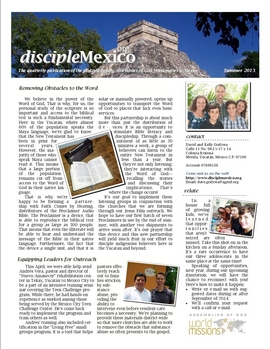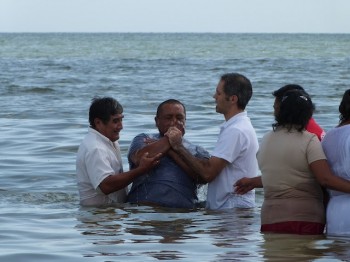Decay, abandonment, death. Entering the town of Santa Maria the signs are everywhere, from the dilapidated central plaza to the disheveled houses on the streets leading to it. However, none of these scenes speaks the volumes that does the ruins of the town’s cathedral. It’s proud facade tries to hide the harsh reality, but, passing through its closed doors, one finds nothing but a crumbling edifice: the roof, collapsed, the windows, replaced by rough hewn boards to keep out trespassers and truth seekers alike. It stands as a testimony to a proud community that could not stop the passage of time. Its monument, like its people, ravaged by the relentlessness of progress.
Still, there is another ruin, perhaps less visible, but no less remarkable. It appears as nothing more than a mound of rubble. To the untrained eye, it could be no more significant than any small hill or rocky bluff, but, in reality, it is the remains of an ancient Maya temple. This culture had once reigned far and wide throughout the Yucatán peninsula, extending its influence, its learning, and it’s power. Now, however, all that it once boasted of is ruined, forgotten, at best left to be stumbled upon by an unsuspecting passer-by.
It’s a sad tale a thousand years old. Still, the lesson that it teaches seemed to have been lost on the residents of Santa Maria. When pastor Josué Novelo and his team arrived early this year with the Jesus Film and its message of hope, few seemed interested although the need for hope in the community were all too visible. But then, one man whose wife had passed away reached out the the Pastor Josué’s team for help and comfort in his time of loss. After that, a woman who lost her husband to cancer approached the group, as well as an elderly couple feeling the same abandonment that their community is suffering, their’s the result of a family looking elsewhere for opportunities. Small beginnings to be sure, but is not that the New Testament pattern? (1 Cor 1:26-31) We had the chance to visit these families, to pray for them and to encourage them, letting them know that they had not been forgotten, helping them to understand that in Christ, although the signs of death may encircle us, there is eternal life.

Certainly, the road ahead is difficult for these new believers. Many of them do not read or write*, and skeptics still abound, like the husband of one believer whose short Maya phrases, though difficult to interpret, were easy to understand. Nevertheless, another look at the ruined structures at the town’s center reveals an interesting discovery: new life. Among the decaying structures, grass, vines, and even trees cover what were once smooth, stone surfaces.
There is life after death, but, for the town of Santa Maria, it doesn’t mean the rebuilding of structures. It means the rediscovery of the real life that comes from knowing God and being known by Him. This month, won’t you pray with us that the new life that has sprouted in this location and others throughout the Yucatán would take root and flourish?
*We’re working to deliver discipleship materials designed for the functionally illiterate with pictures instead of words. We’re also looking to furnish them with a way to listen to the Mayan language New Testament via MP3 so that they can explore the scriptures on their own, hearing it read aloud to them.

















